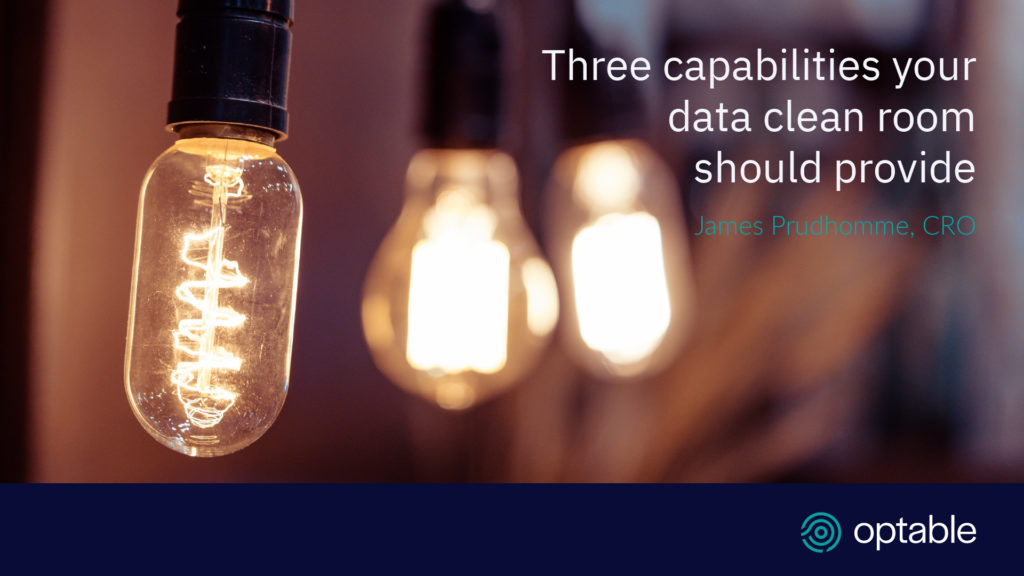By James Prudhomme, CRO, Optable
In 2023, as the sunsetting of the cookie inches closer, marketers are having to face the facts: if they don’t make changes to their targeting strategies and adopt more privacy-compliant measures, they’ll be left behind.
Contextual targeting, first-party IDs, optimising creative – these are all valid solutions. But the emergence of data clean rooms and data collaboration platforms is bringing another layer of data quality and reliability to the table.
With up to four-fifths (80%) of advertisers expected to use data clean rooms in 2023, they are clearly making waves in the industry. But why?
The answer lies in second-party data capabilities. Publishers and advertisers can make their marketing go further if they augment their existing first-party data with second-party data. Combine that with the fact that such platforms are 100% privacy-compliant and don’t share any user-level data with any of the parties involved, and it’s easy to see why data collaboration platforms have become so popular.
However, with so many different platforms on the market, it can be tricky to decide which one to partner with. Let’s take a closer look at the three main features you should look out for.
1. Interoperability
One of the core limiting factors of many data clean rooms on the market is their level of interoperability. Since they only allow paying customers to access and connect with one another, collaboration opportunities can be sparse. Not every participant will want to invest in a data clean room, which is why it’s important to find a platform that has an open data collaboration infrastructure – one that requires only one side of the match to be a customer.
This opens up even more collaboration opportunities and enables participants to invite partners outside of the platform into the data augmentation process.
Another side to interoperability is the ease with which your platform integrates with different applications. Toggling between different tools eats into your time – time that could be spent working on value-add initiatives that drive the business forward. That’s why it is so important to partner with a platform that offers an end-to-end management solution that enables you and your team to easily flip between different systems.
Not only will this increase overall efficiency, but it will also help to close the ‘learning’ gap, especially for those who aren’t immediately familiar with data clean rooms, as they’ll continue to have access to systems they understand.
2. Straight line to activation
So let’s imagine you’ve partnered with a data clean room that is both interoperable and offers an end-to-end workflow solution. What about data activation? How are you going to access your first-party data across your own programmatic/ad delivery systems, and connect it to the data clean room that you’re using?
The answer lies in choosing a solution that’s already equipped with integrations to major ad delivery systems – for instance The Trade Desk, DV360, GAM and other popular programmatic systems – enabling advertisers to instantly activate campaigns and start targeting users from one central clean room.
Otherwise, you may have to build out your own custom integrations, which requires a vast amount of data engineering resources and expertise.
3. Purpose-limited
Privacy compliance is at the heart of data collaboration – or at least, it’s supposed to be. However, not all platforms champion user sovereignty – some still share customer data without consent.
If you’re looking for a truly privacy-compliant solution in 2023, you’ll need to partner with a data clean room that is 100% ‘purpose-limited’. This describes a clean room environment that only ever gives you – and other advertisers and publishers – access to the data you really need, while still enabling all parties to connect their audience data for planning, analysis, measurement and activation purposes.
Until the industry clamps down on solutions that share unnecessary volumes and types of data without consent, we’ll never be truly compliant. So it’s up to all of us – from brands, advertisers and publishers to ad tech vendors and industry organisations – to play our part in making this happen.
Not only do data clean rooms provide a secure and privacy-compliant environment to plan, analyse, measure and activate data at scale, but they also provide rich analytical insights into your audience – insights that can be used to inform future marketing campaigns.
By partnering with a platform that is interoperable, set up for immediate activation and purpose-limited, brands can choose to make 2023 the year in which third-party cookies begin their journey into history.









